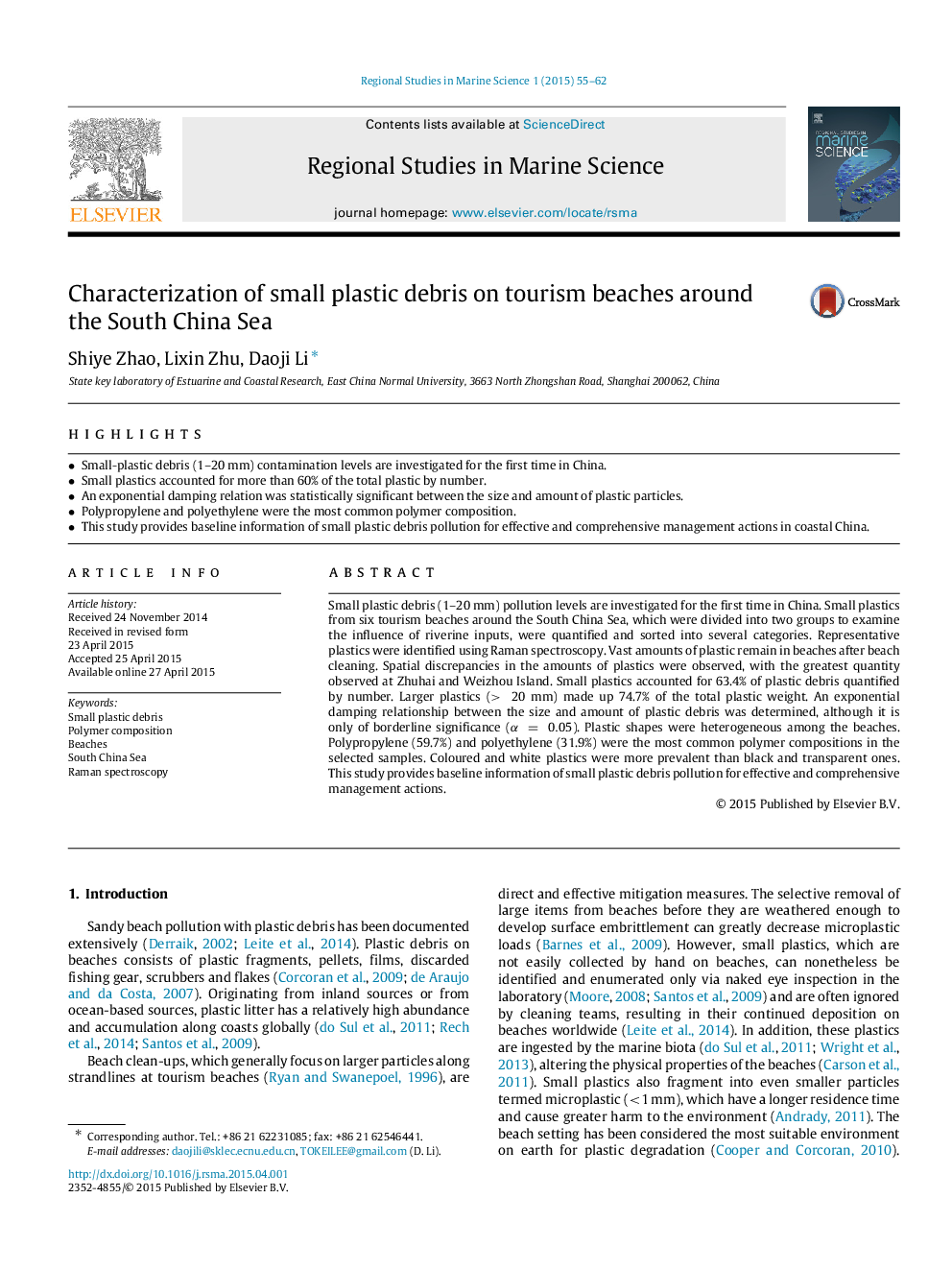| Article ID | Journal | Published Year | Pages | File Type |
|---|---|---|---|---|
| 4478203 | Regional Studies in Marine Science | 2015 | 8 Pages |
•Small-plastic debris (1–20 mm) contamination levels are investigated for the first time in China.•Small plastics accounted for more than 60% of the total plastic by number.•An exponential damping relation was statistically significant between the size and amount of plastic particles.•Polypropylene and polyethylene were the most common polymer composition.•This study provides baseline information of small plastic debris pollution for effective and comprehensive management actions in coastal China.
Small plastic debris (1–20 mm) pollution levels are investigated for the first time in China. Small plastics from six tourism beaches around the South China Sea, which were divided into two groups to examine the influence of riverine inputs, were quantified and sorted into several categories. Representative plastics were identified using Raman spectroscopy. Vast amounts of plastic remain in beaches after beach cleaning. Spatial discrepancies in the amounts of plastics were observed, with the greatest quantity observed at Zhuhai and Weizhou Island. Small plastics accounted for 63.4% of plastic debris quantified by number. Larger plastics (>20mm) made up 74.7% of the total plastic weight. An exponential damping relationship between the size and amount of plastic debris was determined, although it is only of borderline significance (α=0.05α=0.05). Plastic shapes were heterogeneous among the beaches. Polypropylene (59.7%) and polyethylene (31.9%) were the most common polymer compositions in the selected samples. Coloured and white plastics were more prevalent than black and transparent ones. This study provides baseline information of small plastic debris pollution for effective and comprehensive management actions.
